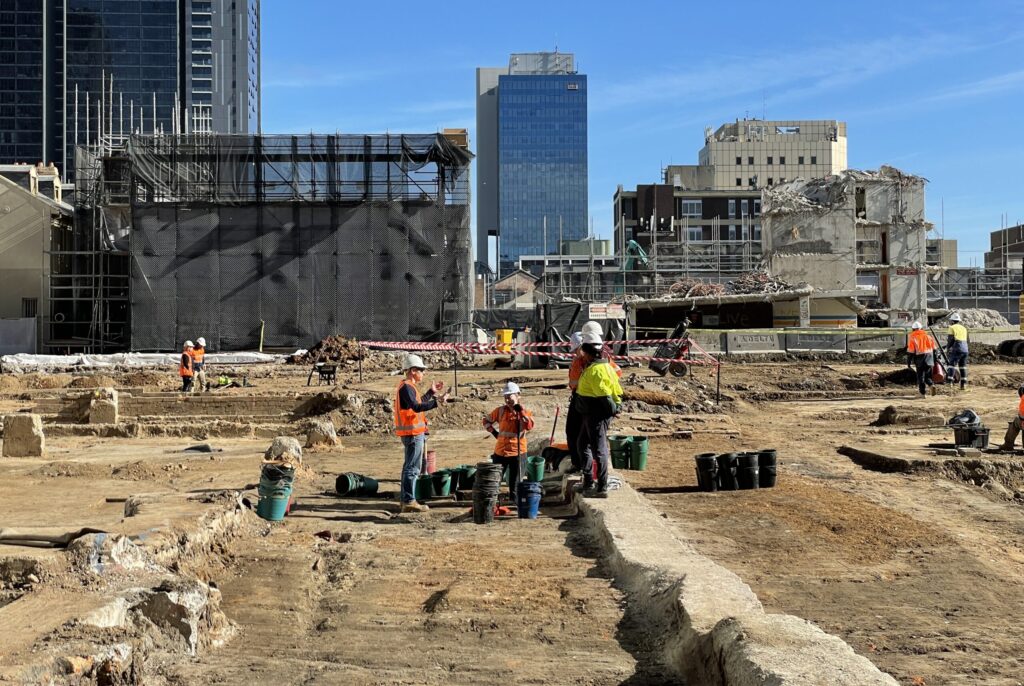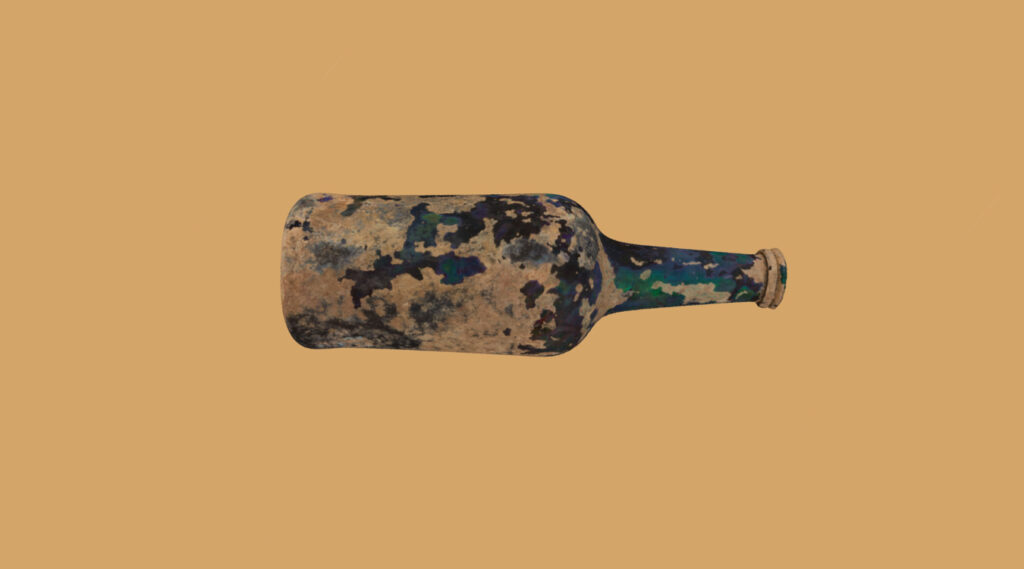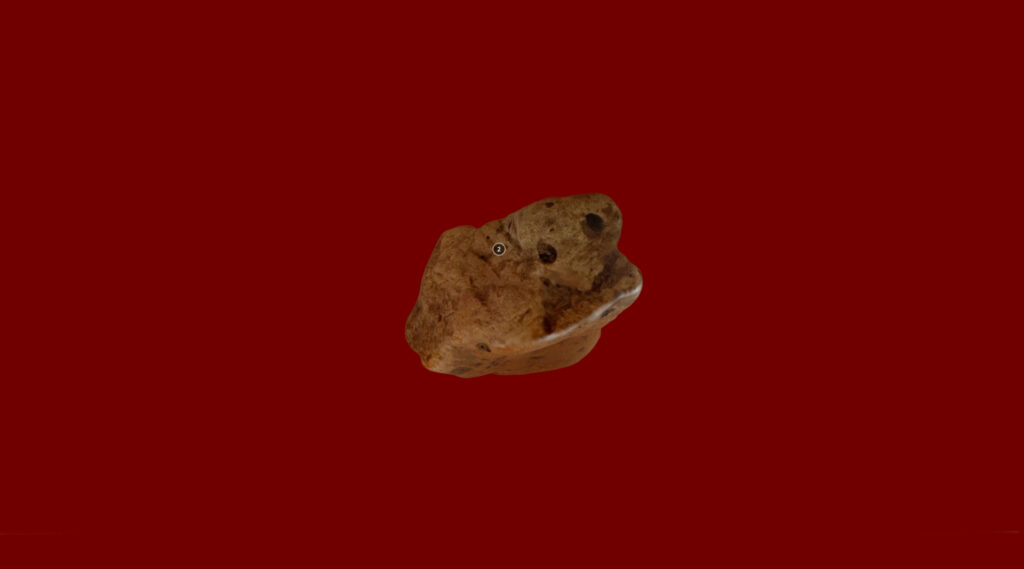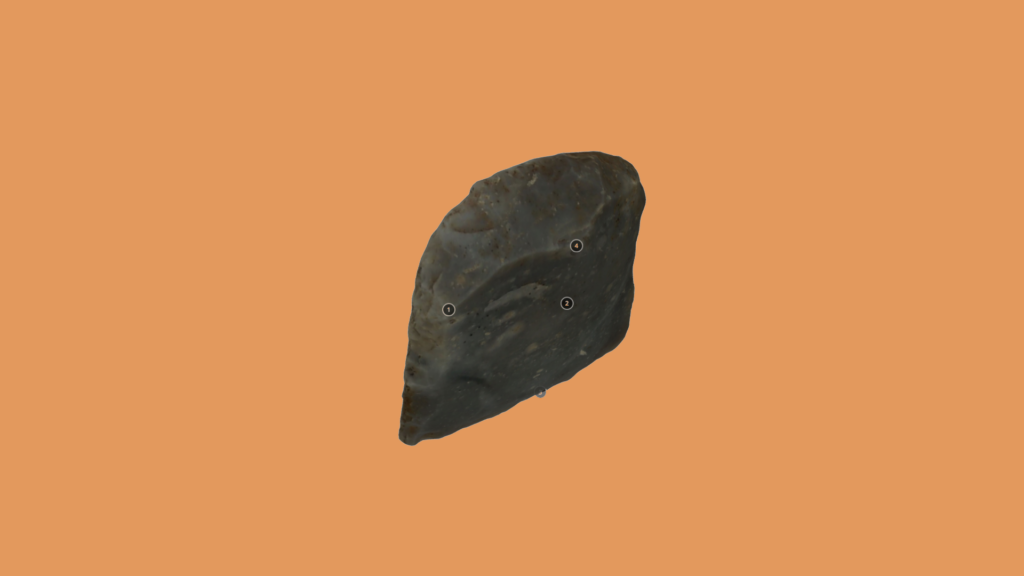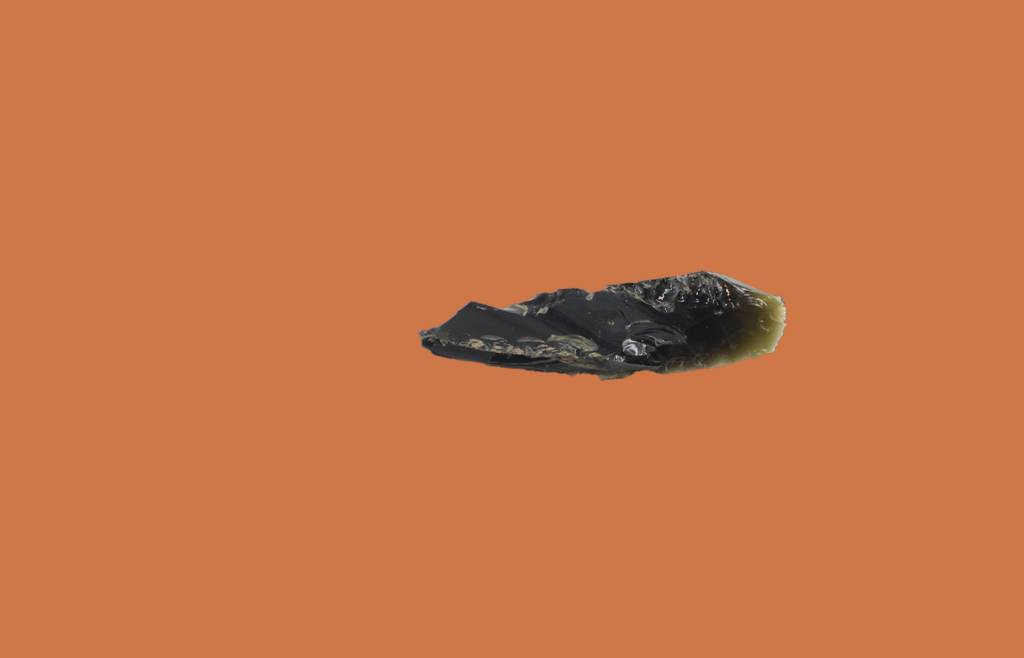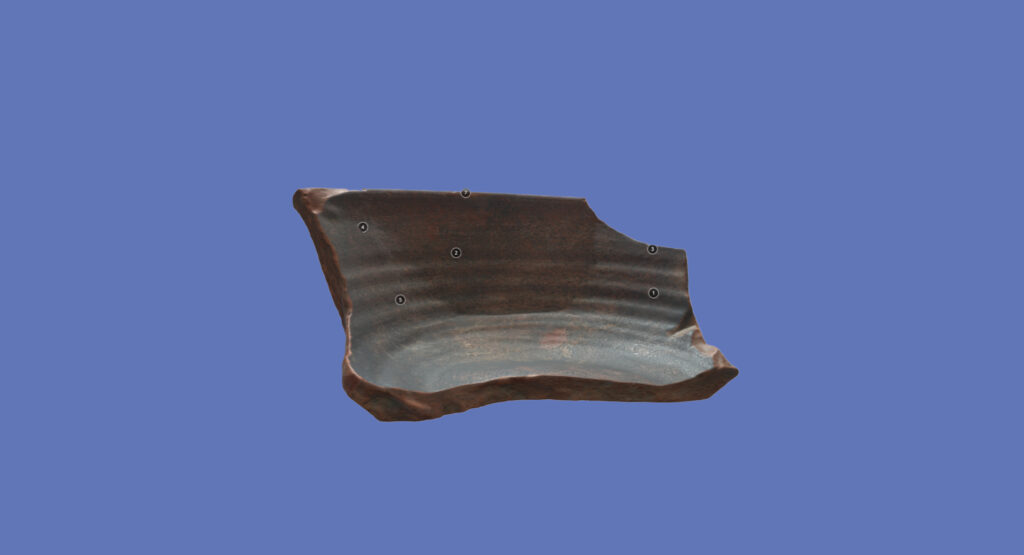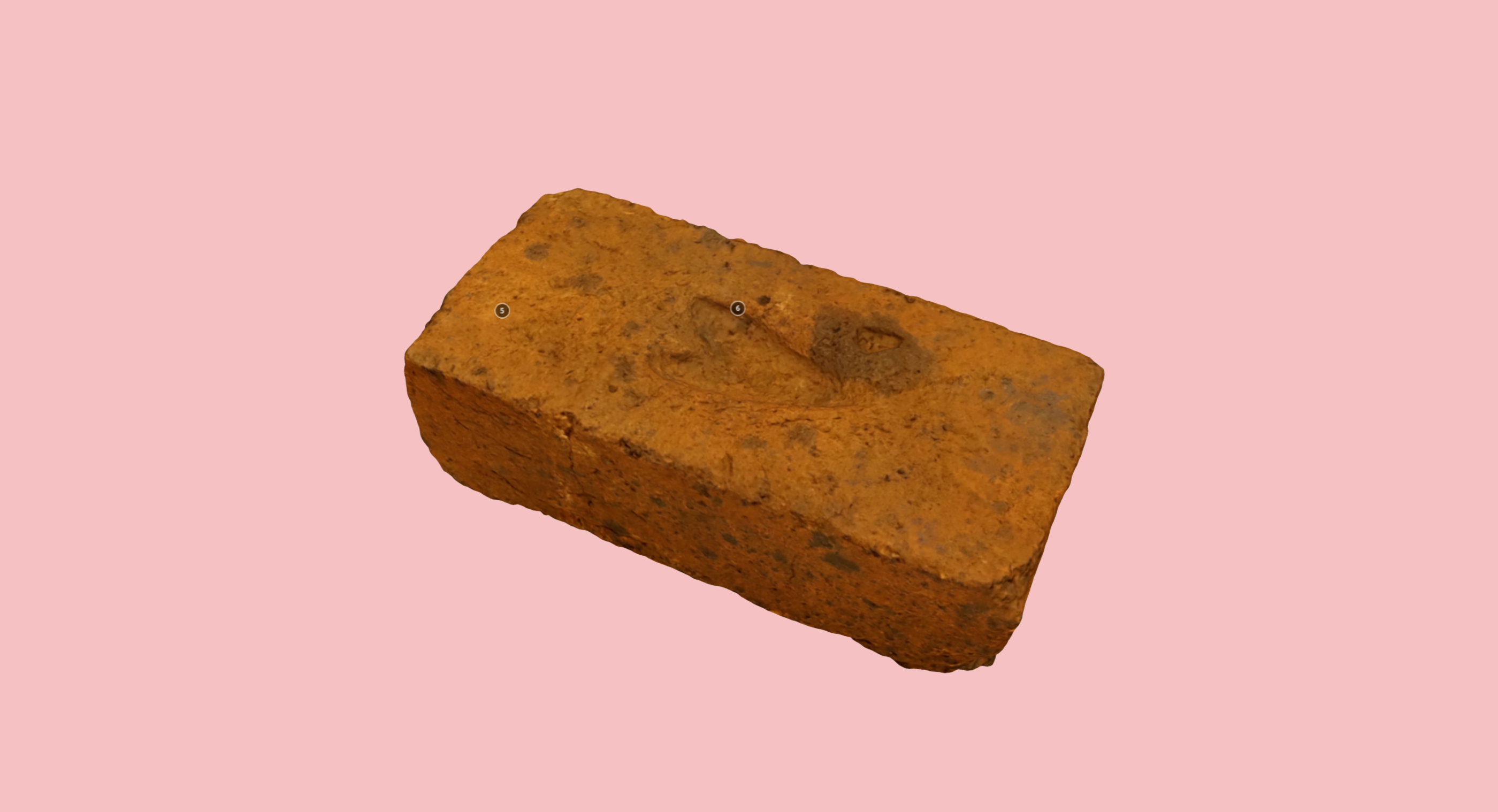
Labours of love
As part of National Archaeology Week, GML's team of archaeologists are sharing some of the First Nations and historical artefacts that they have uncovered in the field.
Brick c1860-1880
Bricks are the literal building blocks of our city, and one of the most common things we find on an archaeological site, whether in rubbish pits, demolition fills or as remains of an old building. They also provide valuable information that helps us better understand the archaeological record, sometimes helping to date a building, identify a builder, a building’s style and construction and demolition activity.
This example is a sandstock heart-frogged brick found in Parramatta that was possibly made by William Muston on Campbell Street between 1860 and 1880. Sandstock bricks were the earliest type of brick found within the colony and were both brought to Australia on the First Fleet, as well as made of local clays in Sydney’s earliest years of the colony.
‘Sandstock’ refers to a type of brick where the rectangular mould that is used to create the brick shape, is coated in sand which prevents the clay sticking to the timber mould frame. The ‘frog’ is the impression in the surface of the brick, created by a metal or timber plate or shape secured in the bottom of the brick mould.
Some of the earliest ‘frogs’ were a broad arrow shape used in the early 1820s through to the 1840s to indicate that the bricks belonged to the colonial government. By the mid-nineteenth century, private brick makers had begun using a variety of frog designs on their bricks. Frogs served multiple purposes including reducing the amount of clay used, aiding in the dispersion of clay evenly into the corners of the brick mould, making the bricks easier to handle, creating a better surface for mortar to bond with as well as being a method of identifying their manufacturer. The heart-shaped frog was common along with diamonds, spades, clubs and letters.
Scroll over the 3D image below and click on the annotations to explore more of the technical features that archaeologists use to identify artefacts like this one.
